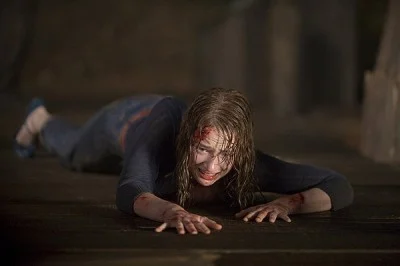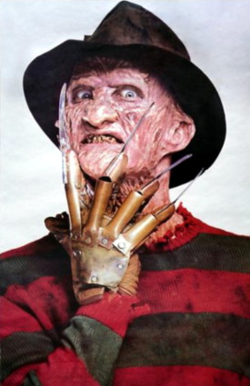Horror films may have had a pretty strong year so far, but that doesn’t mean the genre still has the respect it deserves.
Indeed, horror films still don’t get the big budgets that normally go to other A-list Hollywood flicks, as was painfully illustrated by Guillermo del Toro’s dream project, At the Mountains of Madness, which Universal passed on.

So if you want to make a big, epic horror film with a blockbuster budget, forget it.
As Rue Alexander magazine editor Dave Alexander says, “As much as us horror fans would die to see del Toro’s Mountains of Madness, financially it’s tough to justify a $200 million investment in a genre film with an R rating. You can make 200 Devil Insides for that amount. It’s simple numbers. With piracy concerns and a precarious economy, it’s less and less likely that studios will risk a big budget genre project.”
But as Drew Goddard, director of Cabin in the Woods, notes, “I think the trick is minimizing the risk for the studios, and saying to them you’re going to be a responsible business partner. I don’t know if we’d be able to make Cabin in the Woods if it was going to be expensive. We knew we had to be a cheap movie or it wasn’t going to happen.”
Many fans are hoping that the current rash of remake and sequel-mania will soon come to an end, although that may be wishful thinking. Make-up master Greg Nicotero says his company KNB is currently working on eight projects, and none of them are sequels or remakes. At the same time, he adds, “There’s a great market for remakes, only because it’s easier to sell it. I’m always hit and miss on it. I loved the remake of Dawn of the Dead, and there were a couple of others I really liked, because I like seeing different takes on things. But do we really need to remake I Spit On Your Grave and Mother’s Day? I don’t think so, no.”
“I’m hoping the remake thing dies down,” says Blair Witch Project co-director Eduardo Sanchez. “I don’t mind remakes of movies that are really old, or obscure, but I think remaking a movie that came out in the 90’s, or that’s still popular among fans isn’t a good idea.”

As far as Cabin in the Woods hopefully being a reinvention of the genre that could hopefully spawn more original stories, Goddard says, “It was a love letter to the genre itself, and because it was a labor of love, Joss Whedon and I didn’t feel the normal constraints of, ‘We better play by the rules of this kind of movie.’
“We felt we should write what we wanted to see, and there was something invigorating about letting your imagination run wild and seeing where it took you. It was certainly our intention to do something different, but I don’t know about reinventing anything. I think if you worry about reinventing things, you end up making a math problem. We were always conscious of telling our own story first and foremost.”
With the continued success of the Paranormal Activity movies, the “found footage” style of terror still remains hot as well, although some in the horror community have mixed feelings about it. On one hand, it takes away the quality of a well-crafted horror story, and can be lazy storytelling in the wrong hands, on the other it can add more realism to the proceedings.
Sanchez, who pioneered found footage storytelling with Blair Witch, says, “What’s driving it right now is the fact that they’re just cheap to make, and I think Hollywood’s always looking for ways to make cheaper films, but I’m glad to see it’s expanding and being done in other kinds of films.”
Another promising development is that foreign horror has also grown by leaps and bounds. “Horror movies are now being made all over the world, and that’s exciting,” says Re-Animator director Stuart Gordon. “It really is a worldwide phenomenon. Now there’s incredible films from France and Spain, movies from Scandinavian countries, which never did horror previously, and there’s now dozens of directors in Canada, when we only had David Cronenberg making horror there before.”

Alexander says, “I’ve heard that the economic trouble in Europe, particularly Greece, is fuelling another wave of horror over there. There’s a wave of horror starting to come out of Israel, and zombie movies worldwide are finding new metaphors for the undead. The Dead, which was shot in Africa, brings civil war slaughter into (horror) mythology. There is constant reinvention through cultural perspectives, and new worldwide fears.”
Horror’s certainly had a lot of ups and downs over the years, but no one interviewed for this story feels the genre will ever die.
“Horror will always be around,” says David Miller, who created Freddy Krueger’s classic make-up design.
“There’s something about it that strikes a chord in a lot of people. Even if the big studios stop making it, the independent filmmakers will continue the tradition, because horror can be made inexpensively, and with the advantage of HD cameras and desktop editing, a quality film is easier to make.”
“Horror stories will continue to provide us with a safe forum to deal with all the things we fear and repress,” says Alexander. “There’s no shortage of that going around these days. I think as long as things seem to be going to shit with the economy, war, global warming, and epidemics, the desire for horror will be there. It certainly won’t collapse.”






